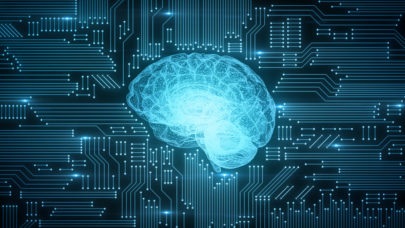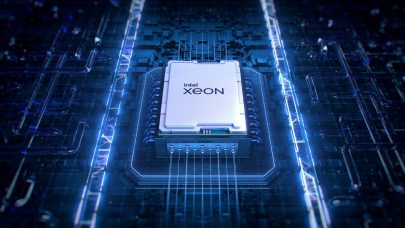Mars, the world’s leading chocolate company and one of the largest food manufacturers, has a unique perspective on the impact that exascale computing will have on the food industry.
Creating a Safer and More Sustainable Food Supply Chain
“The food industry needs to address several grand challenges by developing innovative and sustainable solutions at the intersection of food, agriculture and health. Leveraging the power of technology will be critical on this journey. Exascale, for example, is going to be a radical enabler for helping the food, nutrition and agriculture sectors to evolve and possibly even revolutionize themselves to address these grand challenges,” said Harold Schmitz, chief science officer for Mars and director of the Mars Advanced Research Institute. Schmitz is a member of the US Department of Energy’s Exascale Computing Project Industry Council, a group of external advisors from some of the most prominent companies in the United States.
 The Exascale Computing Project represents the next frontier in computing. An exascale ecosystem, expected in the 2021 time frame, will provide computational and data analysis performance at least 50 times more powerful than the fastest supercomputers in use today, and will maximize the benefits of high-performance computing (HPC) for many industries. In the case of the food industry, exascale will offer new solutions that can improve food manufacturing practices, yielding safer and more healthful products, more efficient industrial processes and a reduced carbon footprint.
The Exascale Computing Project represents the next frontier in computing. An exascale ecosystem, expected in the 2021 time frame, will provide computational and data analysis performance at least 50 times more powerful than the fastest supercomputers in use today, and will maximize the benefits of high-performance computing (HPC) for many industries. In the case of the food industry, exascale will offer new solutions that can improve food manufacturing practices, yielding safer and more healthful products, more efficient industrial processes and a reduced carbon footprint.
“The power of exascale has the potential to advance the work of a first-of-its-kind effort led by Mars and the IBM Research – Almaden Lab, called the Consortium for Sequencing the Food Supply Chain,” Schmitz said. The consortium is centered on surveillance, risk assessment, and diagnoses of food-borne pathogens, and it is one of the few efforts in the world using the best tools of genomics, biology, and chemistry to understand nutrition, public health, and food safety.
“Although food safety has progressed immensely over the last hundred years—most notably through improvements in shelf life and the addition of macronutrients for preventive health—it remains a major challenge for food manufacturers,” Schmitz said. One in six Americans suffers a food-borne illness each year, and 3,000 of those affected die, according to the US Centers for Disease Control. Across the globe, almost 1 in 10 people fall ill every year from eating contaminated food and 420,000 perish as a result, reports the World Health Organization.
Increased industry and regulatory attention on pathogens such as Salmonella, Campylobacter, Listeria and aflatoxin has led to breakthroughs that make our food safer, but more must be done. Scientists need a method by which they can understand the pathogens in various contexts, including the microbial community, the microbiome and the broader food chain. Going one step further, they need a method that enables them to anticipate how the pathogen would behave in real scenarios, such as: a field where crops are grown and harvested; during travel on various transportation channels; or in factory environments where ingredients are processed.
“The consortium aims to revolutionize our understanding of how to predict pathogen outbreaks and discover what environments stimulate pathogens to behave badly, or what microbial environments are able to keep pathogen outbreaks under control,” Schmitz said. “In essence, we want to sequence the genome of the food supply chain and then use data analytics to understand its microbial community. We’re working at the intersection of HPC and the field of systems biology. In this case, the system is the food supply chain, from farm to fork”
Mars has used genome sequencing to progress its efforts to improve the supply-chain sustainability of one of its key ingredients: cocoa. It is a low-yield crop grown primarily in countries that lack the scientific and technological resources to modernize it.
“We realized we needed to give the most talented agricultural scientists a tool box to make the cocoa crop sustainable,” Schmitz said. That tool box is the genome. So, from 2008 to 2010, Mars, IBM, and the US Department of Agriculture Research Service and several other collaborators sequenced the genome of Theobroma cacao, an economically important tropical fruiting tree that is the source of chocolate.
“Analyzing genomic data allowed us to understand how diverse genotypes of cacao perform in different environments. This information is then used to breed superior varieties, with increased yields, quality and stress tolerance,” said Jim Kennedy, computational science leader at the Mars Advanced Research Institute. “We also use data analytics to understand how genetic and environmental factors contribute to pest and disease losses. This information is used to develop environmentally friendly strategies to improve crop health.”
“Since our breakthrough on Theobroma cacao, we’ve already seen great improvements in cocoa,” Schmitz said. “When exascale comes online it will introduce food and agriculture data scientists to an exciting new world of opportunity.”
He explained that exascale will provide food data scientists with an unprecedented level of computing power to probe molecular food chemistry in a manner akin to how the pharmaceutical industry uses technology to study protein molecular dynamics.
“Modeling, simulation and data analytics with exascale will inform food design in a way that the empirical method, or trial and error, never could,” Schmitz said. “There is possibility for this to help unlock some of the biggest food and nutritional challenges that we face today.”
Designing More Efficient Manufacturing Processes
The HPC teams at Mars, which partner with DOE National Laboratories to bolster their computational science efforts, use modeling and simulation and data analytics to optimize not only the company’s supply-chain processes but also its design manufacturing processes. The teams employ tools such as computational fluid dynamics, discrete element method, and multiphysics-type deterministic models in HPC.
“We’re applying multiphysics models to better understand some of our essential processes such as extrusion,” Kennedy said. Extrusion is a fundamental process in which product ingredients are fed into a barrel and forced through a screw. The functions of mixing, sterilization, or cooking may take place in the barrel. Mars products such as confection candy, toffee candy, and pet food undergo extrusion.
“If we’re designing a new extrusion process, we’ll use modeling to optimize the design,” Kennedy said. “In the past, we would over-engineer and end up with an extruder that was one-and-a-half times bigger than what we needed. Modeling enables us to understand what the design parameters should be before we cut steel and build anything. But we’ve learned we need more computing power and speed, like what exascale will provide, to handle the complexity of our processes.”
Reducing the Greenhouse Gas Footprint
Exascale will enable the food industry to pioneer more efficient manufacturing processes that use less energy, in turn lessening its environmental impact.
“The food and agriculture sectors are among the largest contributors to climate change and the loss of biodiversity,” Schmitz said. “The energy required in global agriculture, the greenhouse gases emitted, and the vast amount of land used are all contributors. The good news is that the advancements in HPC and the eventual arrival of exascale computing will enable the industry to better use data science advances to improve its environmental and ecological footprint.”
Spreading the Use of Data Science
“The advent of exascale will help spread the use of data science more widely,” Kennedy said. At present, most companies are facing a shortage of data scientists while the need for digitization is expanding. At the same time, companies are trying to automate some of the tasks that would normally require a data scientist, such as cleaning, normalizing, or preprocessing data for analysis, simulation, or modeling.
“Exascale will make it possible for computers to run through scenarios faster and provide the end-user with data output in language that non-experts can understand,” Kennedy said. “Then they can go about slicing and dicing the data to prepare it for simulation. I think exascale will bring that capability to the masses so that they can directly work with their data and gain the insights and ask the questions they need for their research.”
Mars recently confirmed a collaboration agreement with the Joint Institute for Computational Sciences, an Institute of the University of Tennessee and Oak Ridge National Lab. The business plans to leverage the DOE computational infrastructure to find solutions for some of its most complex challenges and opportunities.




























































